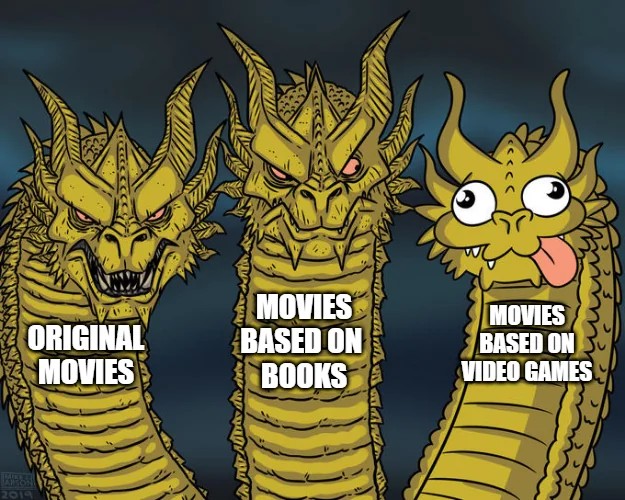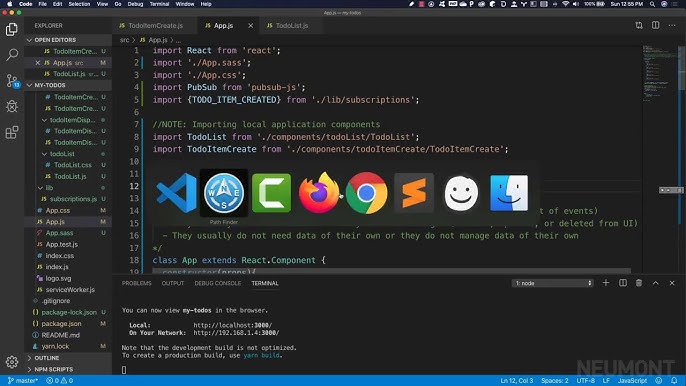PopCap Games’ 2009 release, Plants vs. Zombies, is more than just a classic tower defense game; it’s a masterclass in design philosophy. In an industry often chasing graphical fidelity and complex narratives, this quirky title about horticultural home defense captured the hearts of millions and remains a benchmark for accessible, engaging, and deeply satisfying gameplay. Its enduring success is not an accident but the result of a meticulous fusion of intuitive mechanics, a perfectly calibrated learning curve, irresistible charm, and surprising strategic depth. It’s a game that respects its players, welcoming newcomers with open arms while offering veterans a rewarding challenge.
What makes it work so well? The answer lies in its elegant simplicity and the seamless way it layers complexity upon a rock-solid foundation. Plants vs. Zombies understands the psychology of play—the joy of mastery, the thrill of overcoming a challenge, and the delight of pure, unadulterated fun. This analysis will deconstruct the core pillars of its design, exploring how its mechanics, pacing, aesthetics, and strategic elements combine to create an experience that is not just playable, but timeless. From the first Peashooter planted to the final triumphant note of “Zombies on Your Lawn,” the game is a deliberate and brilliant exercise in interactive entertainment.
The Genius of Simplicity: Core Mechanics and Accessibility
At its heart, Plants vs. Zombies succeeds because it is fundamentally easy to understand. The game avoids the steep learning curves and intimidating interfaces that plague many strategy titles. Instead, it builds its entire experience on a few core concepts that are introduced gracefully and are immediately intuitive to players of any skill level.
An Intuitive Battlefield: The Five-Lane Grid
The game’s primary interface is the suburban lawn, represented as a simple five-lane grid. This design choice is brilliant in its clarity. Unlike tower defense games with winding paths and complex choke points, the grid immediately communicates the objective: zombies advance from right to left in straight lines, and the player must place plants in those lanes to stop them. This board game-like structure provides an instant mental model. Players don’t need to guess enemy paths or worry about complex placement geometry. The threat is direct, and the solution is equally direct. This visual simplicity removes a significant barrier to entry, allowing players to focus on strategy rather than wrestling with the game’s spatial rules.
Resource Management, Distilled
Nearly every strategy game has an economy, but Plants vs. Zombies presents its resource management in the most straightforward way imaginable: Sun. Sun falls from the sky periodically and is produced by Sunflowers. This single resource is used to “buy” every plant in the game. There are no complex tech trees, no secondary resources to balance, and no convoluted build orders. The core economic loop is simple: plant Sunflowers to generate more Sun, then use that Sun to plant defensive and offensive units. This direct cause-and-effect relationship makes strategic planning feel natural. Do you invest early in your economy by planting more Sunflowers, risking a weak early defense, or do you prioritize immediate firepower to handle the first few zombies? This simple choice is the foundation of every strategic decision in the game.
Clarity of Purpose: Unambiguous Unit Roles

Every plant and every zombie in the game has a clear, easily identifiable purpose. A Peashooter shoots peas. A Wall-nut acts as a barrier. A Cherry Bomb is a powerful, single-use explosive. The visual design reinforces these roles perfectly. The Peashooter looks like a little cannon, the Wall-nut looks tough and immovable, and the zombies telegraph their abilities through their appearance. The basic Zombie just shuffles forward, while the Conehead Zombie is visibly tougher. The Pole Vaulting Zombie carries a pole, signaling its ability to bypass the first plant it encounters. This “what you see is what you get” design philosophy eliminates ambiguity and allows players to make informed decisions quickly. There’s no need to study complex stat sheets; the function of each unit is understood almost instantly, making the learning process feel like discovery rather than homework.
The Perfect Pacing and Flawless Learning Curve
If the game’s mechanics are its foundation, its pacing is the brilliant architecture built upon it. Plants vs. Zombies is celebrated for its masterfully designed learning curve, which introduces new elements at a rate that is consistently engaging without ever being overwhelming. It teaches through play, ensuring the player feels smart and capable at every stage.
A Masterclass in Onboarding
The opening levels of the game are a textbook example of how to teach a player without a single intrusive tutorial pop-up. The very first level gives you only one plant (the Peashooter) and one type of enemy (the basic Zombie). It’s impossible to lose, but it perfectly teaches the core gameplay loop: collect sun, plant a shooter, and watch it defend a lane. The next level introduces the Sunflower, teaching the importance of economy. Then comes the Cherry Bomb, teaching the concept of powerful, cooldown-based abilities. Each level adds just one new element—a plant or a zombie—and creates a scenario designed specifically to highlight its function. This “scaffolding” approach ensures that by the time the challenges become more complex, the player has a full toolbox of strategies they learned organically.
Rhythm of Tension and Release
The game masterfully controls its pacing to create a compelling rhythm of tension and calm. Each level builds slowly, starting with a few lone zombies before escalating to larger groups. The iconic announcement, “A huge wave of zombies is approaching,” serves as a clear signal for the level’s climax. This gives the player a moment to prepare, use their most powerful abilities, and brace for the onslaught. Surviving this final wave provides a powerful sense of accomplishment and relief. This predictable wave structure turns each level into a mini-story with a clear beginning, middle, and end. Furthermore, the introduction of mini-games like Vasebreaker and I, Zombie, along with the Zen Garden, provides delightful palate cleansers that break up the core gameplay, preventing it from ever feeling repetitive.
Irresistible Charm: The Power of Personality
Beyond its clever mechanics and pacing, Plants vs. Zombies is beloved for its immense personality. The game’s charming art, memorable sound design, and genuine humor elevate it from a well-designed strategy game to a cultural phenomenon. It proves that a game doesn’t need to be serious to be taken seriously.
A Timeless and Expressive Art Style

The game’s cartoonish aesthetic is a core part of its identity. Instead of the grim, realistic gore common to the zombie genre, PopCap opted for a bright, friendly, and endlessly appealing style. The plants are expressive and heroic, from the determined puff of the Peashooter’s cheeks to the sleepy yawn of a Fume-shroom. The zombies are more goofy than terrifying, stumbling forward with a comical determination. This art style not only gives the game a unique visual identity but also broadens its appeal significantly, making it accessible and enjoyable for players of all ages. The animations are packed with personality; a zombie’s arm might fall off after taking damage, or a Jalapeno will simmer with rage before exploding. These small details bring the world to life.
Iconic Sound Design and Music
The sound design in Plants vs. Zombies is just as crucial as its visuals. Every action is accompanied by a satisfying and informative sound effect. The soft “pop” of a collected sun, the distinct “thwump” of a Peashooter’s projectile, and the gruesome-yet-cartoony “crunch” of a zombie eating a plant all provide essential gameplay feedback. The music, composed by Laura Shigihara, is equally iconic. The main theme, “Grasswalk,” is catchy and upbeat, perfectly setting the game’s quirky tone. The soundtrack dynamically shifts to match the on-screen action, with tense music kicking in during the final waves. And of course, the game culminates in the legendary music video “Zombies on Your Lawn,” a hilarious and charming reward that perfectly encapsulates the game’s joyful spirit.
Deceptive Depth: The Strategy Beneath the Surface
While its accessibility is a key strength, the game’s longevity comes from its surprising strategic depth. Beneath the simple exterior lies a complex puzzle game that continually asks players to adapt and optimize their strategies. The principle of “easy to learn, hard to master” is woven into its very fabric.

Synergies, Counters, and Tactical Choices
The game slowly reveals a rich system of synergies and counters. Players learn that placing a Torchwood in front of Peashooters will ignite their peas for double damage. They discover that Magnet-shrooms are the perfect counter to Football Zombies and Buckethead Zombies, yanking their metal armor away. The game is filled with these tactical relationships, encouraging experimentation. The introduction of new environments further deepens the strategy. Night levels limit sun production and introduce mushrooms, which have unique abilities. The pool levels split the lawn into aquatic and terrestrial lanes, requiring a whole new set of plants. The final roof levels force players to use catapult-style plants to arc their shots over the slanted terrain. Each new world is not just a change of scenery; it’s a fundamental shift in the strategic puzzle.
The Seed Slot Limitation: Forcing Meaningful Decisions
Perhaps the most brilliant strategic element is the limited number of seed slots available for each level. Players cannot bring every plant they’ve unlocked into battle. Instead, before a level begins, they must analyze the types of zombies they will face and build a custom “loadout” tailored to the challenge ahead. This single constraint forces difficult and meaningful decisions. Do you bring the Chomper for high single-target damage, or the Fume-shroom for dealing with groups? Is the Squash worth a slot for emergency defense, or would an extra sun-producing plant be more valuable in the long run? This pre-level planning phase adds a rich layer of meta-strategy, encouraging players to think critically about their arsenal and fostering immense replayability.
Conclusion
Plants vs. Zombies works because it is a masterwork of balanced design. It is a game built on a foundation of pure, unadulterated fun, where every element—from the core mechanics to the art style—serves a clear purpose. Its genius lies in its ability to be two things at once: a casual, accessible game that anyone can pick up and enjoy, and a deep, strategic puzzler that rewards careful planning and experimentation. By prioritizing clarity, perfecting its learning curve, and infusing every pixel with charm and personality, PopCap Games created more than just a successful title; they created a timeless classic. The lessons from its design—simplicity, elegance, and a profound respect for the player’s intelligence and time—remain as relevant today as they were in 2009, a lasting testament to the power of thoughtful, joyful game creation.













